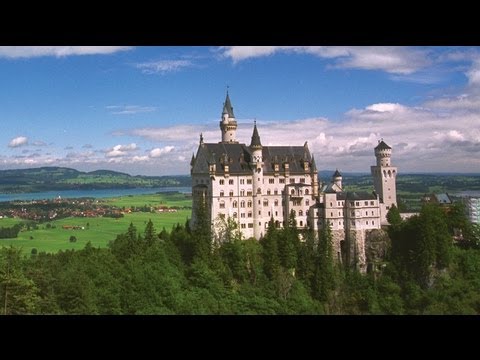
Nestled in the picturesque landscapes of Bavaria, Germany, the small village of Schwangau is home to one of the world’s most iconic and dreamlike castles — Neuschwanstein Castle. This architectural marvel not only epitomizes the romantic spirit of 19th-century history but also serves as a muse for various fairy-tale depictions around the globe. For travelers exploring Europe, a visit to Neuschwanstein Castle, enhanced by insights from Rick Steves’ Europe Travel Guide, offers a quintessential travel experience that plunges you into a storybook setting.
#### The Enchantment Begins
Designed by King Ludwig II of Bavaria in 1869, Neuschwanstein Castle was intended to be a personal refuge for the reclusive king but swiftly transformed into a symbol of idealized romantic architecture. Perched high on a rugged hill above the village of Hohenschwangau near Füssen, its soaring towers and intricate facades echo through the lush valleys and provide stunning vistas over Bavaria’s breathtaking landscapes.
#### Planning Your Visit
Rick Steves’ Europe Travel Guide recommends planning your visit to Neuschwanstein well in advance, especially during peak tourist seasons from late spring to early fall. To truly appreciate its grandeur without the crowds, consider an early morning or late afternoon tour. Access to the castle is only possible through guided tours which last approximately 30 minutes. While photography isn’t allowed inside, each room unveils awe-inspiring craftsmanship and décor that leaves lasting impressions.
#### Journey Through History
The guided tour delves into King Ludwig II’s ambition and his deep connection with composer Richard Wagner. Visitors will discover rooms inspired by Wagner’s operas including a lavish singers’ hall and an opulent throne room — albeit without an actual throne since Ludwig passed away before its completion.
#### Viewpoints and Vantage Points
Beyond the castle walls, Rick Steves emphasizes exploring surrounding areas for panoramic views and additional photo opportunities. One notable spot is Marienbrücke (Mary’s Bridge), which spans over Pöllat Gorge just behind the castle, offering perhaps the most famous perspective of Neuschwanstein against its Alpine backdrop.
Additionally, hiking enthusiasts can explore numerous trails leading from Schwangau that offer scenic views not only of Neuschwanstein but also of its neighboring Hohenschwangau Castle and surrounding lakes. For those less inclined to hike, horse-drawn carriage rides provide a leisurely yet equally enchanting experience.
#### Local Delights
Further enrich your visit by indulging in regional Bavarian cuisine at local restaurants or picking up unique souvenirs from nearby shops in Schwangau village. Traditional dishes such as schnitzel or käsespätzle will replenish your energy after a day filled with exploration.
#### Travel Tips from Rick Steves
– **Accommodations:** Stay overnight in Füssen or even in Schwangang itself to capture early morning light on the castle or enjoy serene evenings after most tourists have departed.
– **Transportation:** Public transport is readily available with buses running frequently between Füssen train station and Schwangau. However, renting a car gives you more flexibility to explore at your own pace.
– **Seasonal Visits:** If possible, visit during autumn when fewer crowds and vibrant foliage create an unforgettable ambience around this fairytale castle.
Neuschwanatein Castle remains one of Europe’s most visited attractions for good reason. Its ethereal beauty captivates every traveler’s imagination—just as King Ludwig II envisioned when creating this monumental edifice dedicated to culture and artistic beauty. Following tips from Rick Steves’ travel guide ensures that your journey into this quintessential part of European heritage is both magical and memorable—truly a travel bite worth savoring!
